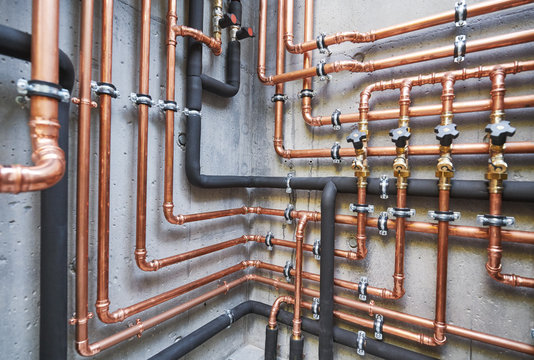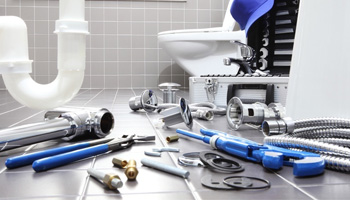How do you actually feel when it comes to Understanding Your Home's Plumbing Anatomy?

Comprehending exactly how your home's plumbing system functions is vital for every single house owner. From providing clean water for alcohol consumption, cooking, and showering to securely removing wastewater, a properly maintained pipes system is critical for your family members's health and convenience. In this extensive overview, we'll explore the detailed network that makes up your home's plumbing and deal suggestions on upkeep, upgrades, and managing common concerns.
Intro
Your home's plumbing system is greater than simply a network of pipes; it's a complex system that guarantees you have access to clean water and efficient wastewater removal. Recognizing its parts and how they collaborate can assist you protect against expensive repair work and make certain every little thing runs smoothly.
Basic Elements of a Plumbing System
Pipes and Tubes
At the heart of your pipes system are the pipes and tubes that lug water throughout your home. These can be made of various materials such as copper, PVC, or PEX, each with its advantages in terms of durability and cost-effectiveness.
Fixtures: Sinks, Toilets, Showers, etc.
Components like sinks, commodes, showers, and tubs are where water is made use of in your house. Understanding exactly how these fixtures link to the plumbing system assists in identifying issues and planning upgrades.
Valves and Shut-off Factors
Valves control the flow of water in your pipes system. Shut-off valves are crucial during emergency situations or when you require to make repair work, permitting you to isolate parts of the system without disrupting water circulation to the whole residence.
Supply Of Water System
Main Water Line
The major water line attaches your home to the municipal water supply or a personal well. It's where water enters your home and is dispersed to numerous fixtures.
Water Meter and Pressure Regulator
The water meter procedures your water usage, while a pressure regulatory authority makes sure that water streams at a secure pressure throughout your home's plumbing system, stopping damages to pipes and components.
Cold Water vs. Hot Water Lines
Understanding the distinction between cold water lines, which supply water directly from the primary, and hot water lines, which lug warmed water from the hot water heater, helps in troubleshooting and planning for upgrades.
Water drainage System
Drain Water Lines and Traps
Drain pipes lug wastewater far from sinks, showers, and commodes to the sewage system or septic system. Traps avoid sewer gases from entering your home and likewise catch debris that can cause clogs.
Ventilation Pipes
Ventilation pipes allow air into the water drainage system, preventing suction that might slow down drain and create catches to vacant. Correct air flow is essential for maintaining the stability of your pipes system.
Significance of Appropriate Drainage
Guaranteeing proper water drainage avoids backups and water damages. Frequently cleaning drains pipes and keeping catches can avoid costly repairs and expand the life of your plumbing system.
Water Heating Unit
Sorts Of Hot Water Heater
Water heaters can be tankless or traditional tank-style. Tankless heating systems warm water as needed, while containers store heated water for instant use.
Just How Water Heaters Attach to the Plumbing System
Comprehending how hot water heater attach to both the cold water supply and hot water circulation lines assists in diagnosing issues like inadequate warm water or leaks.
Maintenance Tips for Water Heaters
Frequently flushing your water heater to remove debris, inspecting the temperature settings, and inspecting for leaks can prolong its lifespan and enhance power efficiency.
Typical Plumbing Issues
Leakages and Their Causes
Leaks can happen because of aging pipes, loosened installations, or high water pressure. Addressing leakages quickly avoids water damage and mold development.
Blockages and Blockages
Clogs in drains pipes and toilets are usually caused by flushing non-flushable things or a build-up of grease and hair. Utilizing drain displays and being mindful of what drops your drains pipes can prevent blockages.
Indicators of Pipes Troubles to Expect
Low tide stress, slow-moving drains pipes, foul odors, or unusually high water bills are indicators of possible pipes issues that must be dealt with immediately.
Pipes Upkeep Tips
Routine Examinations and Checks
Arrange annual plumbing examinations to catch issues early. Try to find indications of leakages, deterioration, or mineral accumulation in faucets and showerheads.
DIY Maintenance Tasks
Straightforward tasks like cleansing tap aerators, looking for commode leaks using color tablets, or protecting revealed pipelines in cold environments can protect against significant pipes problems.
When to Call a Specialist Plumbing
Know when a plumbing concern calls for professional know-how. Trying complex fixings without correct knowledge can result in more damage and greater repair service expenses.
Upgrading Your Plumbing System
Reasons for Updating
Updating to water-efficient components or changing old pipelines can boost water quality, lower water bills, and raise the worth of your home.
Modern Pipes Technologies and Their Advantages
Discover modern technologies like wise leak detectors, water-saving commodes, and energy-efficient hot water heater that can save cash and reduce ecological effect.
Expense Factors To Consider and ROI
Calculate the upfront costs versus long-term cost savings when taking into consideration pipes upgrades. Numerous upgrades pay for themselves via reduced energy expenses and less repairs.
Ecological Influence and Preservation
Water-Saving Components and Home Appliances
Installing low-flow faucets, showerheads, and toilets can considerably reduce water usage without giving up efficiency.
Tips for Reducing Water Use
Straightforward behaviors like dealing with leaks promptly, taking much shorter showers, and running full lots of laundry and meals can conserve water and lower your utility bills.
Eco-Friendly Plumbing Options
Consider sustainable plumbing materials like bamboo for flooring, which is durable and eco-friendly, or recycled glass for countertops.
Emergency situation Preparedness
Actions to Take During a Pipes Emergency
Know where your shut-off shutoffs are located and how to shut off the water system in case of a burst pipe or significant leakage.
Importance of Having Emergency Situation Get In Touches With Helpful
Maintain contact information for neighborhood plumbers or emergency situation solutions easily offered for fast action during a pipes dilemma.
Do It Yourself Emergency Fixes (When Appropriate).
Momentary repairs like utilizing duct tape to patch a leaking pipeline or placing a bucket under a leaking faucet can lessen damages until a specialist plumbing professional shows up.
Verdict.
Understanding the composition of your home's plumbing system equips you to preserve it effectively, conserving time and money on repair services. By following normal maintenance regimens and staying notified about modern pipes technologies, you can ensure your plumbing system runs successfully for many years to come.
Understanding Your Home Plumbing System: A Comprehensive Guide
Plumbing System: The Lifeline of Your Home
At its core, the plumbing system is designed to perform two primary functions: bring fresh water into your home and remove wastewater. The system is a network of pipes, fixtures, and other components that transport water and sewage. Residential plumbing systems include potable water supply lines, drain-waste-vent (DWV) systems, and various plumbing fixtures that make water use in daily tasks possible.
Key Components:
Water Supply: This part of your plumbing system brings municipal water into your home, passing through the main water supply line. It s responsible for supplying all water needs, from drinking to bathing.
Drainage System: It carries waste and water away from your home to the sewer or septic system. This system includes all the piping within your home that leads to external sewage or septic systems.
Vent System: An essential yet often overlooked component, the vent system allows sewer gases to escape and lets air into the drainpipes, ensuring water and waste move correctly through the system.
Fixture: More Than Just Taps and Toilets
Plumbing fixtures are the most interactive parts of the plumbing system, including faucets, showers, toilets, and sinks. Each fixture is connected to the plumbing system and plays a role in either the delivery of freshwater or the disposal of waste and wastewater.
Types of Fixtures:
- Faucets and Sinks: Used for washing hands, dishes, and other daily water needs.
- Toilets: Dispose of human waste through the sewage system.
- Bathtubs and Showers: Provide bathing facilities, requiring both hot and cold water supply.
Water Supply: The Source of Life
The water supply system is a critical component, ensuring that potable water is available throughout your home for various uses, including drinking, cooking, and cleaning. This system consists of pipes that distribute water to different parts of the house, controlled by valves to regulate the water flow.
Types of Plumbing: Materials and Methods
Various types of plumbing systems and materials are used in residential settings, each with its advantages and applications. From copper and PVC pipes for water supply to cast iron and ABS for drainage, the choice of materials can impact the longevity and efficiency of your plumbing system.
https://intownplumbingtx.com/articles/home-plumbing-system-guide/

I am very serious about Anatomy of a House: Understanding the Components and I hope you appreciated my entry. Make sure you pause to share this blog post if you appreciated it. We thank you for reading our article about .
Book Your Service
Comments on “Understanding The Anatomy of Your House's Plumbing System”